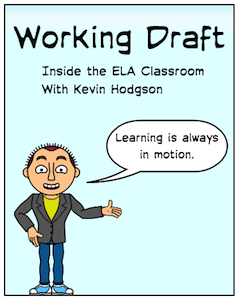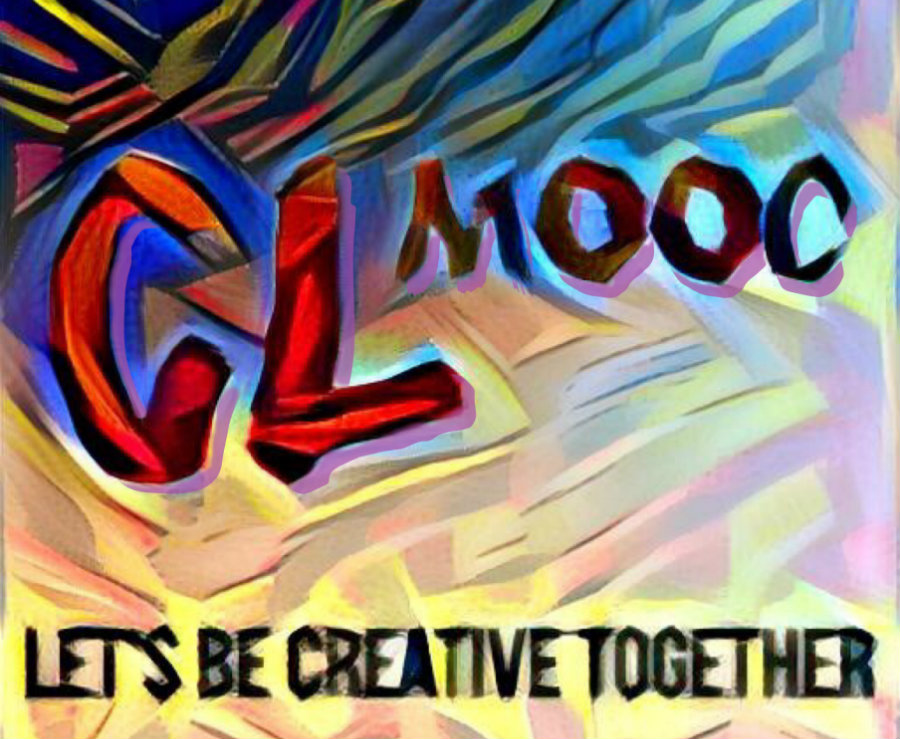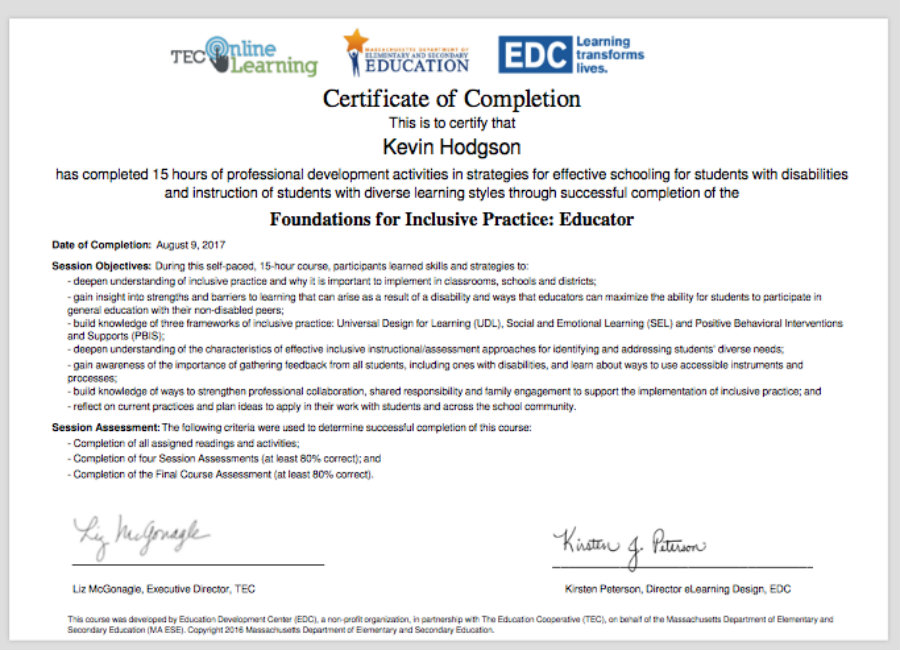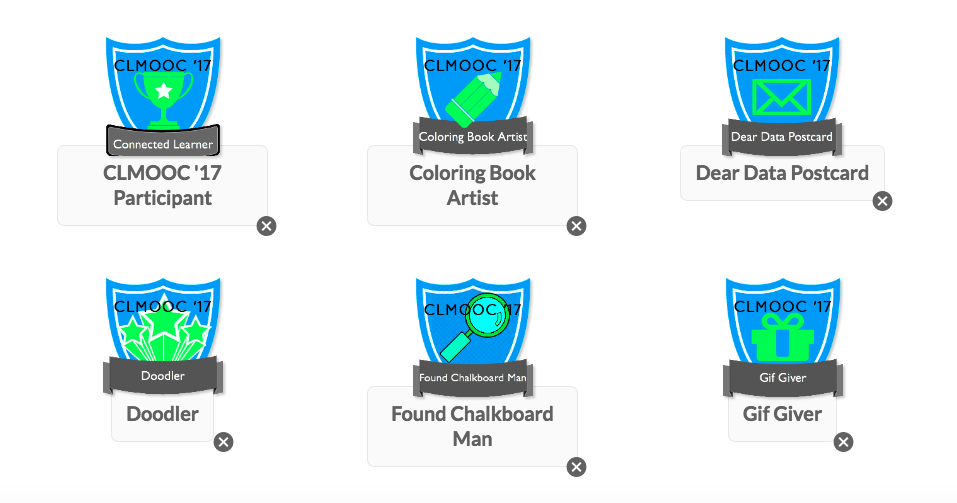2 Kinds of Summer PD: One Open, One Closed
A MiddleWeb Blog

First, I took part in the fifth year of the Connected Learning MOOC. Second, I took a required 15-hour online course for my teaching re-certification in Massachusetts.
The contrast between the two online learning experiences could not be starker.
One – the CLMOOC – is an open learning course, built on creativity and collaboration. There, I was a learner as well as facilitator. The other experience – a course about Inclusionary Practices in the classroom – was closed and solitary. There, I was a student, and only a student.
I learned from both endeavors, of course, but I suspect the learning I did in the open CLMOOC course will resonate more deeply in my classroom as the school year begins.
Creating and Collaborating with the CLMOOC
The Connected Learning MOOC began five years ago with support and vision from the National Writing Project, which was working on incorporating Connected Learning ideas into the elements of professional development for educators. After three years of support, via a MacArthur Foundation grant, the National Writing Project shifted to other projects – most notably, the Letters to the Next President initiative to apply Connected Learning theory into practice for students.
I was one of the folks in the “CLMOOC Crowd” who decided to keep the CLMOOC running through volunteer efforts. Behind the scenes, about two dozen people now organize and support CLMOOC.
The result has been year-round connections with educators throughout the world, through projects like postcard exchanges and Pop Up Make Cycles, and an intensive five to six weeks in the summer. The summer weeks are built around Make Cycle themes, and feature collaborations, creative activities, live Google Hangouts, Twitter Chats, reflective practice and more.
The “open” nature of the CLMOOC means that educators can come and go as they want, and return whenever they have time, and follow their interests. That means that a theme of art, for example, might lead to a collaborative music piece built around mathematical concepts riffing off the color spectrum, as happened this summer.
Valuable but Lonely Learning
Contrast the CLMOOC’s energy and excitement with my other online course about Inclusionary Practices through my state’s education department. This 15-hour professional development is now a requirement for all teacher re-certification, and while there are some paid courses offered through local colleges, often costing a few hundred dollars, I decided to do the free one offered by the Massachusetts Department of Elementary and Secondary Education. Did I mention it’s free?
Actually, the course itself, offered in a Drupal online platform, was not horrible. There were plenty of videos, audio interviews with classroom teachers, charts and diagrams, and text-based resources. The topic is critically important, too, as we keep moving forward to make sure we include all of our students, whatever the disability, into regular classroom settings as much as possible. The course covered behavior management plans, models of co-teaching, Universal Design for Learning and more. It was valuable.
But it was rather boring. Dreadfully hum-drum.
I’d sit with my headphones on, for hours, just me and my screen. Watching. Listening. Reading. Taking quizzes. Taking breaks. Starting up again. Repeat. The course designers tried to add some interactive elements by using Padlet Walls for sharing reflections, but posting to the online wall felt more like exit slips, not like conversations.
CLMOOC, in contrast, is all about the conversations and collaborations. That piece of CLMOOC gives the whole thing energy and momentum, and provides participants with levels of interaction that push you just beyond your comfort levels. The state’s online course was a linear continuum, one step followed by another step followed by another step. You don’t veer off the path. CLMOOC is all about the uncharted places beyond the paths.
Paths are meant to be veered off.
Extrinsic and Intrinsic Rewards
In one course, I earned a certificate. I’ll need that for my five-year recertification.
In the other, I earned some badges. I’ll need that to remind me of what it means to be a learner in a network of others.
Needless to say, the badges – even though they have no extrinsic value in terms of my job as a teacher in my school district – hold more value to me than the PDP certificate from my state’s education department.
I’m not suggesting that every professional development opportunity should have the wild energy of a CLMOOC open course. Nor maybe every class during the school year. Although some days, the hum and seeming chaos of my classroom might make you wonder what I am up to, and I am now taking another online course with A.J. Juliani to learn about implementing Genius Hour.
You can’t earn university graduate credits or PD certificates with CLMOOC and that may turn some educators off from the experience. Still, perhaps more online course designers could add a bit more play and fun to the mix – and find new ways to make the learner feel like more than just another cog in the wheel, another mark on the “to do” checklist.
You know, sort of like we all need to do with our students, of all ability levels and of all learning styles, in our classrooms.




































